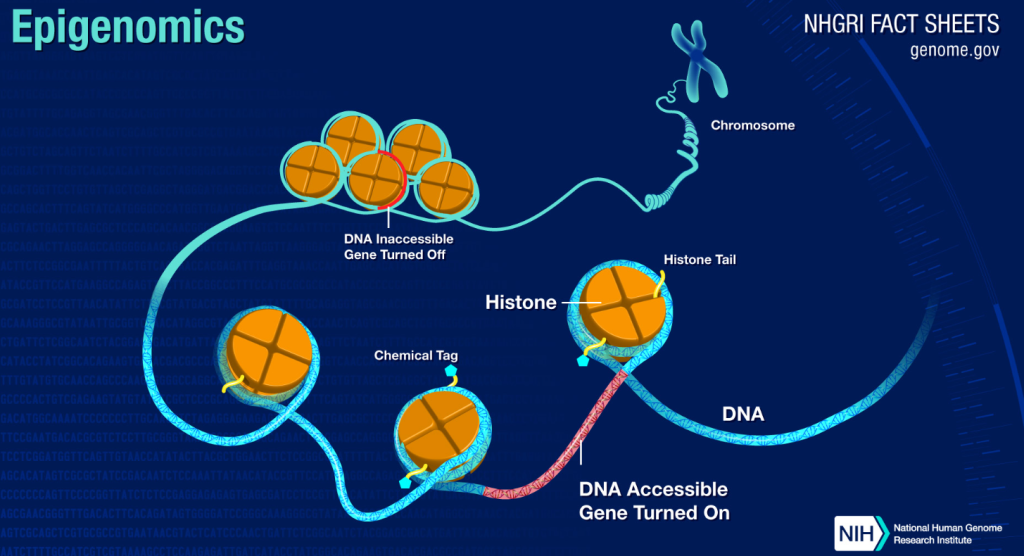
The epigenome is a set of chemical compounds that modify, or mark, the genome in a way that tells it what to do, where to do it, and when to do it. These marks, which are not part of the DNA itself, can be passed on from cell to cell as cells divide, and from one generation to the next.
Key Points:
- Modification without Alteration: Unlike genetic mutations which change the sequence of DNA, epigenetic changes involve modifications to the DNA molecule without altering the sequence.
- DNA Methylation: One of the most studied epigenetic modifications is DNA methylation. Methylation of DNA, especially at cytosine bases, often leads to gene silencing.
- Histone Modification: Histones are proteins around which DNA winds. Modifications to histones can influence gene expression. Acetylation, methylation, phosphorylation, and ubiquitination are examples of histone modifications that can either repress or activate gene expression.
- Non-coding RNAs: These are RNA molecules that don’t code for proteins but can influence gene expression and have roles in the epigenome.
- Inheritance and Environment: Epigenetic marks can be passed down from one generation to the next, but they are also influenced by environmental factors. For instance, nutrition, stress, and toxins can cause changes in the epigenome.
- Implications in Health and Disease: Aberrant epigenetic modifications can lead to diseases like cancer. For instance, the inappropriate silencing or activation of genes can lead to uncontrolled cell growth.
- Potential for Therapies: Since epigenetic modifications are reversible, there’s potential in developing therapies that can modify these marks to treat diseases.
The epigenome is the collection of all chemical modifications to the DNA and chromatin in a cell, which alter gene expression, and are heritable (via meiosis and mitosis). The modifications occur as a natural process of development and tissue differentiation, and can be altered in response to environmental exposures or disease.

The epigenome is dynamic and can change over time in response to environmental factors, such as diet, exercise, and stress. It can also change as we age.
There are three main types of epigenetic modifications:
- DNA methylation: This is the process of adding methyl groups to DNA. This can silence genes by making them less accessible to transcription factors.
- Histone modifications: These are changes to the proteins that DNA is wrapped around. Histone modifications can change the way DNA is packaged, which can affect gene expression.
- Non-coding RNAs: These are RNAs that are not translated into proteins. Non-coding RNAs can regulate gene expression by binding to DNA or to other RNAs.
The epigenome plays an important role in many aspects of health and disease. Epigenetic changes have been linked to a variety of conditions, including cancer, heart disease, and neurodegenerative diseases.
Epigenetic research has the potential to develop new approaches to diagnosis, treatment, and prevention of disease. For example, epigenetic profiling can be used to develop more accurate diagnostic tests for cancer. Additionally, epigenetic drugs are being developed to treat a variety of diseases, including cancer, Alzheimer’s disease, and Parkinson’s disease.